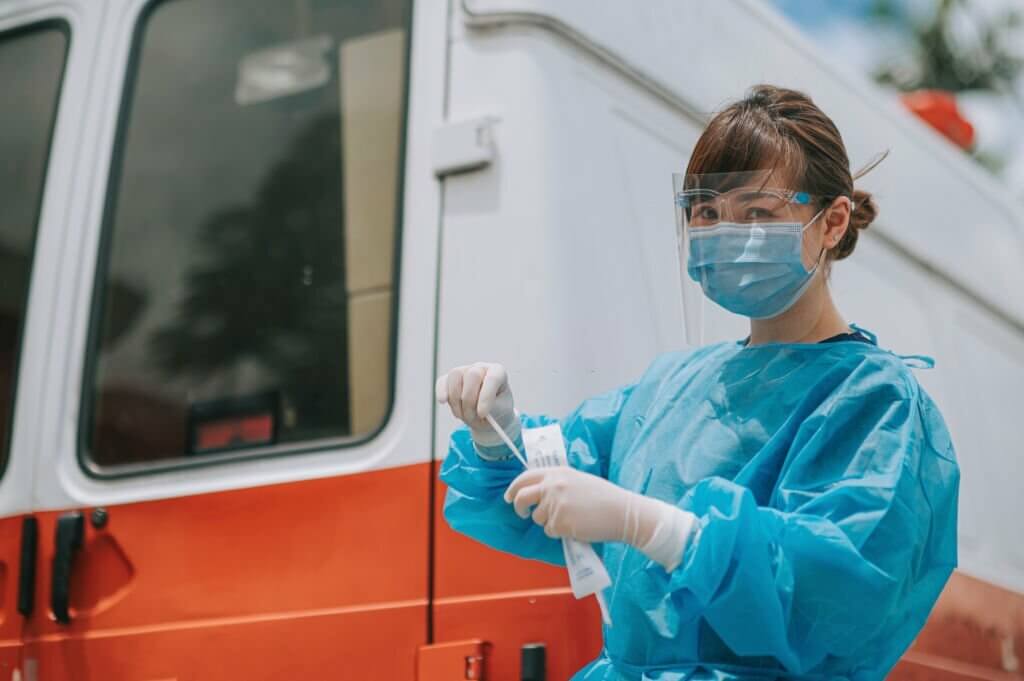Nasopharyngeal Swabs: Mapping the Respiratory Microbiome

The emergence of COVID-19 sparked new scientific curiosity about the nasopharyngeal microbiome. As researchers desire insights into how SARS-CoV-2 interacts with other microbes co-colonizing the throat, nasopharyngeal swabbing has taken center stage.
Exploring the Secrets of the Nasopharyngeal Microbiome
The nasopharynx - the upper part of the throat behind the nose - harbors a diverse community of microbes that may influence respiratory health and disease. Recent studies of nasopharyngeal swabs from COVID-19 patients are unlocking new insights into this niche.
What does sequencing nasopharyngeal swabs reveal about the microbiome?
Metagenomic sequencing of nasopharyngeal swabs from COVID-19 patients identified over 1300 microbial taxa, revealing substantial diversity of bacteria, viruses and fungi. However, few taxa were shared between individuals, suggesting a limited core microbiome. The microbiome shifted during SARS-CoV-2 infection, with more taxa identified in mild and asymptomatic patients. Severe patients had the least diversity.
Do pathogens and antibiotic resistance genes inhabit the nasopharynx?
Analysis of nasopharyngeal swabs showed carriage of known respiratory pathogens like Streptococcus pneumonia in all patient groups, not just those infected with SARS-CoV-2. Antibiotic resistance genes were also near ubiquitous, especially those encoding β-lactam resistance. Carriage of pathogens and resistance genes was higher in mild/asymptomatic COVID-19 patients compared to uninfected controls.
How does SARS-CoV-2 infection impact the nasopharyngeal microbiome?
SARS-CoV-2 infection appears to dysregulate the nasopharyngeal microbiome, enabling increased colonization by pathogens and expansion of antibiotic resistance. Whether these microbes contribute to COVID-19 severity is still unknown. But monitoring their presence could guide appropriate use of antibiotics in treatment.
Therefore…sequencing of nasopharyngeal swabs from COVID-19 patients has provided fascinating glimpses into a little studied body niche. Ongoing research is still needed to unpack the links between this microbiome, respiratory infections like COVID-19 and patient health outcomes.
Click to View → Mantacc Nasopharyngeal Swabs
References
Mahmud ASM, Seers CA, Shaikh AA, Taznin T, Uzzaman MS, Osman E, Habib MA, Akter S, Banu TA, Sarkar MMH, Goswami B, Jahan I, Okeoma CM, Khan MS, Reynolds EC. A multicentre study reveals dysbiosis in the microbial co-infection and antimicrobial resistance gene profile in the nasopharynx of COVID-19 patients. Sci Rep. 2023 Mar 13;13(1):4122. doi: 10.1038/s41598-023-30504-3. PMID: 36914691; PMCID: PMC10009844.
Related Posts
Nasopharyngeal Swabs: Is Rotation Necessary for Optimal Sampling?








